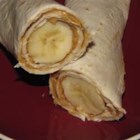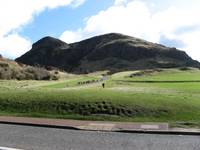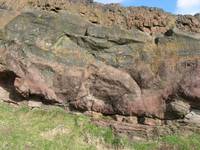 In the process of making zucchini-raisin cookies for a book club meeting today (we’re discussing The Demolished Man, by Alfred Bester), I encountered an instruction in the recipe about chilling the mixed-up dough for at least an hour before baking the cookies. I’ve run into this before, but it seems to appear inconsistently. So I wondered: why do some recipes call for chilling the dough and others do not? Since you’re going to bake the dough at 350+ degrees anyway, does it matter whether it starts out at room temperature or fridge temperature? Won’t it just take them longer to bake?
In the process of making zucchini-raisin cookies for a book club meeting today (we’re discussing The Demolished Man, by Alfred Bester), I encountered an instruction in the recipe about chilling the mixed-up dough for at least an hour before baking the cookies. I’ve run into this before, but it seems to appear inconsistently. So I wondered: why do some recipes call for chilling the dough and others do not? Since you’re going to bake the dough at 350+ degrees anyway, does it matter whether it starts out at room temperature or fridge temperature? Won’t it just take them longer to bake?
Apparently not. Googling suggests that there are two main reasons cited for chilling dough. One applies to cookies that will be rolled out and cut (like sugar cookies), especially if they use butter for their fat source. Butter at fridge temperature is much easier to work with than butter at room temperature, which is sticky. And of course, even if you start out with butter you pulled from the fridge, by the time you’ve beat it with eggs and sugar and other ingredients, it’s likely to have warmed up and been dashed into tiny pieces that are quite squishy and sticky. I was already familiar with this concept from my previous experiences making pie crusts, although I’ve never chilled that dough after mixing it either (maybe I should try that).
But the cookies I’m making aren’t rolled cookies. It turns out that there’s a more subtle reason for chilling drop-cookie dough. This applies to cookies with flour (which explains why recipes for other kinds of cookies may not recommend chilling). Chilling permits the gluten strands in the flour to relax, avoiding a “rubbery” consistency in the final product. (The same reasoning is behind the advice to let pancake dough sit after mixing and before dropping it on the griddle.) The elapsed time may also permit the flour to absorb more of the moisture in the dough, so the cookies don’t spread out so much when baking.
So how long should you chill the dough? My current recipe says “Cover dough and chill for at least 1 hour or overnight.” One hour or overnight? Isn’t that kind of a broad range? (Whoever could possibly mix up cookie dough and then wait until the following day to bake it?)
David Leite of the NY Times conducted the experiment I would have done (although he used chocolate chip cookies), saving me the trouble, and reported on his results in “Perfection? Hint: It’s Warm and Has a Secret”. He mixed up dough and then baked batches that had been chilled for 12, 24, and 36 hours. He reports:
“At 12 hours, the dough had become drier and the baked cookies had a pleasant, if not slightly pale, complexion. The 24-hour mark is where things started getting interesting. The cookies browned more evenly and looked like handsomer, more tanned older brothers of the younger batch. The biggest difference, though, was flavor. The second batch was richer, with more bass notes of caramel and hints of toffee.
Going the full distance seemed to have the greatest impact. At 36 hours, the dough was significantly drier than the 12-hour batch; it crumbled a bit when poked but held together well when shaped. These cookies baked up the most evenly and were a deeper shade of brown than their predecessors. Surprisingly, they had an even richer, more sophisticated taste, with stronger toffee hints and a definite brown sugar presence. At an informal tasting, made up of a panel of self-described chipper fanatics, these mature cookies won, hands down.”
But how did they compare to going straight from the mixing bowl to the oven, with no chilling at all? No data. Also, I spot a methodology problem: although he ensured similar dough consistency by mixing all of the dough at the same time, the increasing chill durations meant that the baking happened at different times. While careful to control for the same cookie sheet, same oven, and same oven temperature, this has to mean that the 36-hour-chilled cookies would be fresher and have an obvious edge over the 12- and 24-hour-old previously baked cookies. To get all of the cookies to come out of the oven at the same time, you’d need to mix up separate batches (hopefully consistently!) at 36, 24, and 12 hours before the baking extravaganza.
No time for that today! My cookies won’t get 36 (or even 12) hours of chilling this time around. But I’ll have satisfied the minimum requirement. Maybe I can do the full experiment another time.
 Shop Class as Soul Craft, by Matthew Crawford, is a book that my friend Jim recommended long ago. I’m finally getting the chance to take a look for myself. It emphasizes the deep-down satisfaction that we gain from making (or fixing) things ourselves, with our own hands. More generally, it considers the nature of work, and what constitutes a meaningful occupation.
Shop Class as Soul Craft, by Matthew Crawford, is a book that my friend Jim recommended long ago. I’m finally getting the chance to take a look for myself. It emphasizes the deep-down satisfaction that we gain from making (or fixing) things ourselves, with our own hands. More generally, it considers the nature of work, and what constitutes a meaningful occupation.






